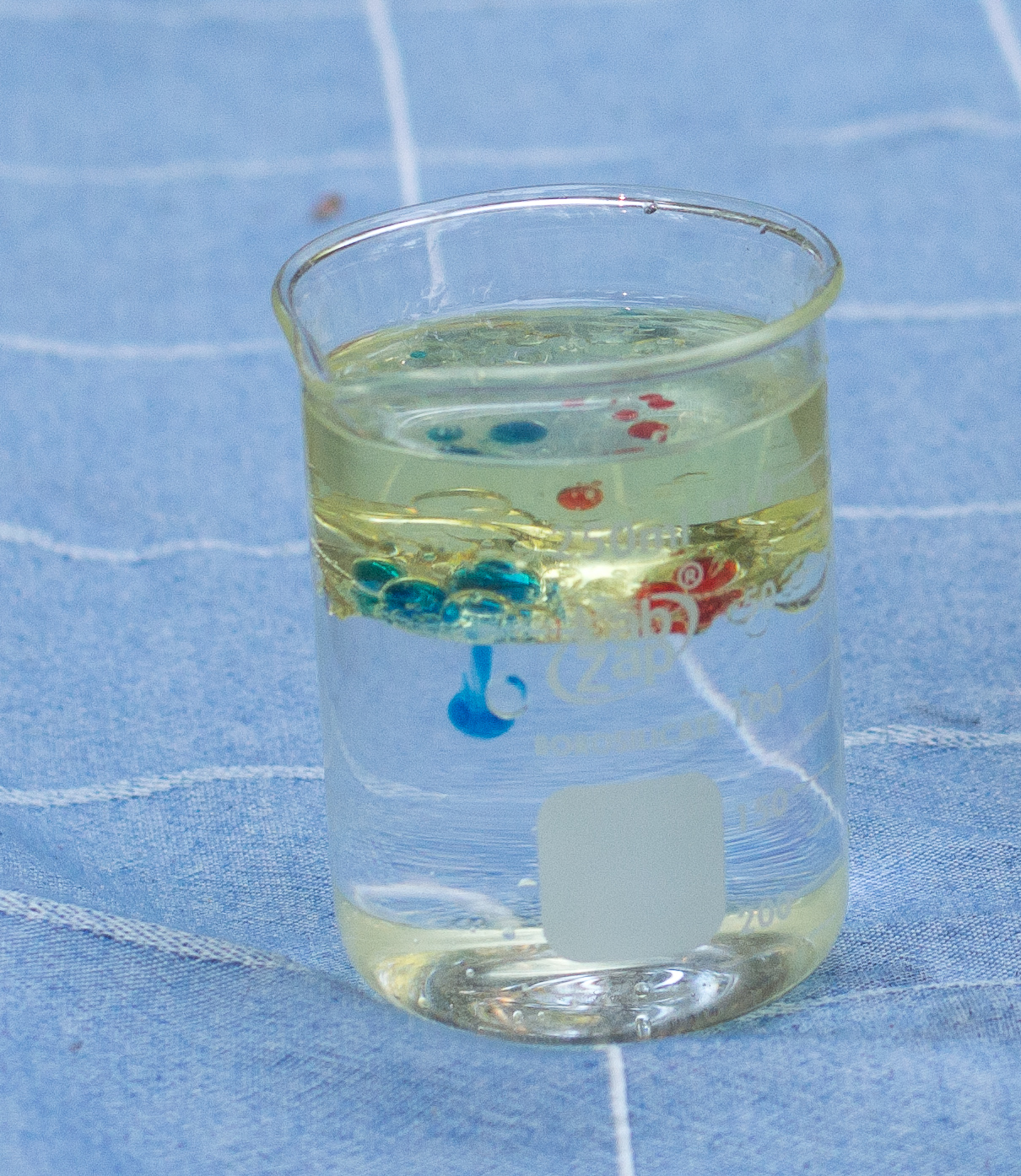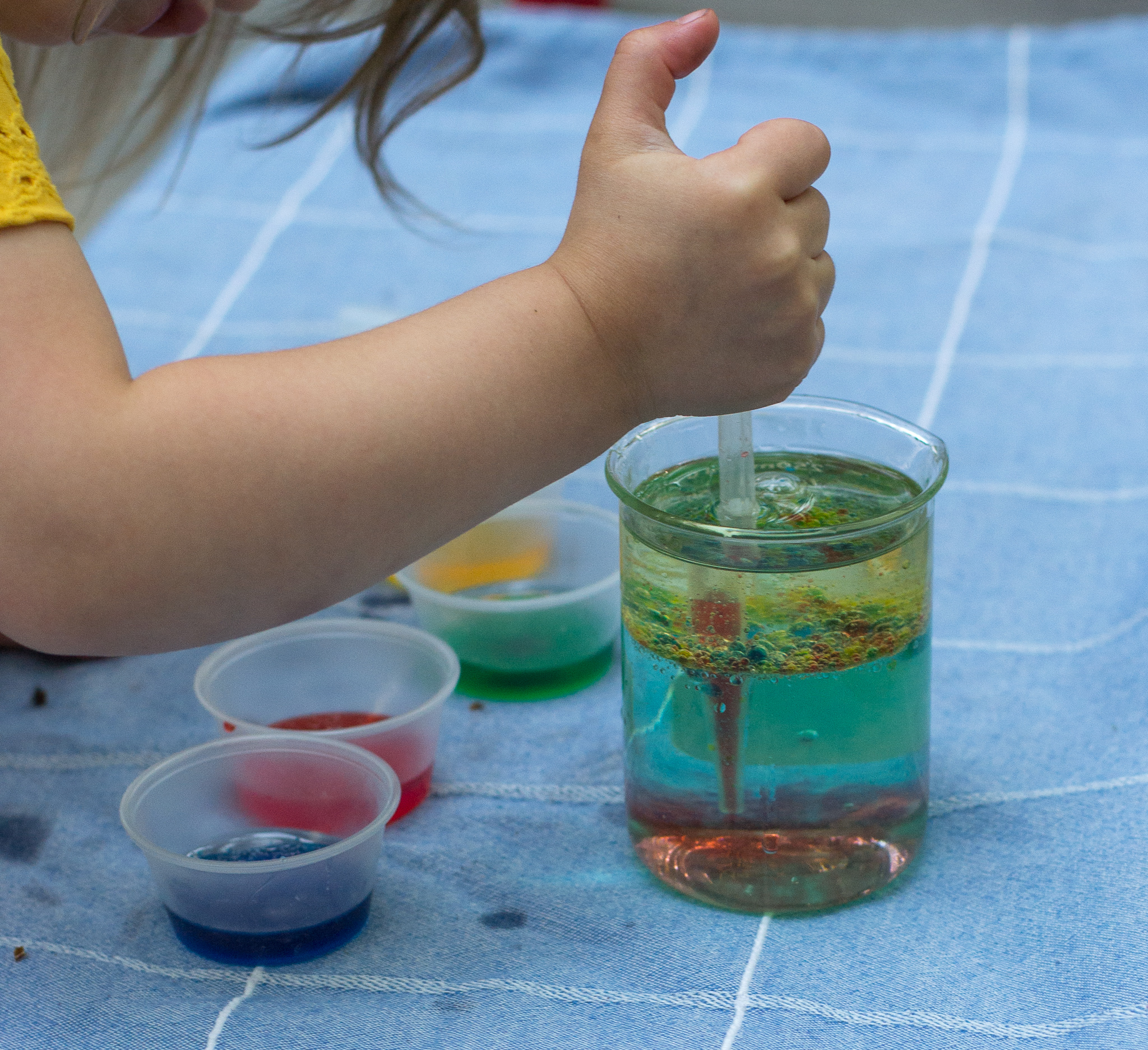The forced relocation of my science lab from classroom to home garage (thanks, COVID) resulted in a boon for preschool: all the test tubes, beakers, funnels, pipettes, scalpels, scales, cylinders, burners, and whatnot an Oma could need. Right here! Right where I can grab what I want, anytime I want it!
Yesterday, I wanted a great big cylinder, a couple of pitchers, one 250 mL beaker, two plastic pipettes, food dye, and a bunch of little containers for colored water. These so that Miss Em could practice her lab skills. Missing were the cousins, but we’ll catch them up next time.
Our lesson this day was a variation of last week’s “floating and sinking”. Calling it “oil and water”, I first prepped the lab table with all the special things. Miss Em dove right in.
“Miss Em, would you like to smell the water in this cup?” She would, and it smelled good. Knowing blue water is more spectacular than clear water, we dropped a drop of blue into her cup and she swirled it right away. It still smelled good, even though it looked different. We did not taste, as the first rule in chemistry lab is never lick the spoon…or taste the stuff in the cup.
Next, we looked at the oil in the other cup. Miss Em smelled it. “Would you like to touch it?” I asked. She would, and it was slippery.
This I love about science — even when you KNOW what’s going to happen, it’s still cool. Just look at those layers! Deep blue water on the bottom with oil floating on the top. (Having that gigantic graduate on hand just made the demo all the more cool.) Miss Em thought it was cool, too, especially since it was her first time. A big shake of the cylinder mixed the liquids temporarily, but ta da! They separated again, just like they were supposed to.
Not done experimenting yet, we improvised further. Oil atop clear water, along with teeny cups of blue, red, yellow, and green water, allowed Miss Em to practice her pipetting skills. Pipettes, you’ll recall, are tricky. Used to accurately measure and transfer teeny amounts of liquids from one solution to another, they require practice.
Teeny amounts of liquid are called “micro-drops”. So, here we have a micro-scientist squirting micro-drops into a beaker. She’s doing a decent job of it, and she has good technique. See the concentration? See how she’s holding that pipette almost vertical? That’s important.
Soon the joy of shooting and stirring colored water got the best of my micro-scientist.
But just before careful technique turned to unbridled merriment, we had this:
Orbs of jewel-toned micro-drops falling lazily through a cloud of oil, bursting as they encountered a water layer. Pretty, yes?
Still pretty. Still science. Still cool.





